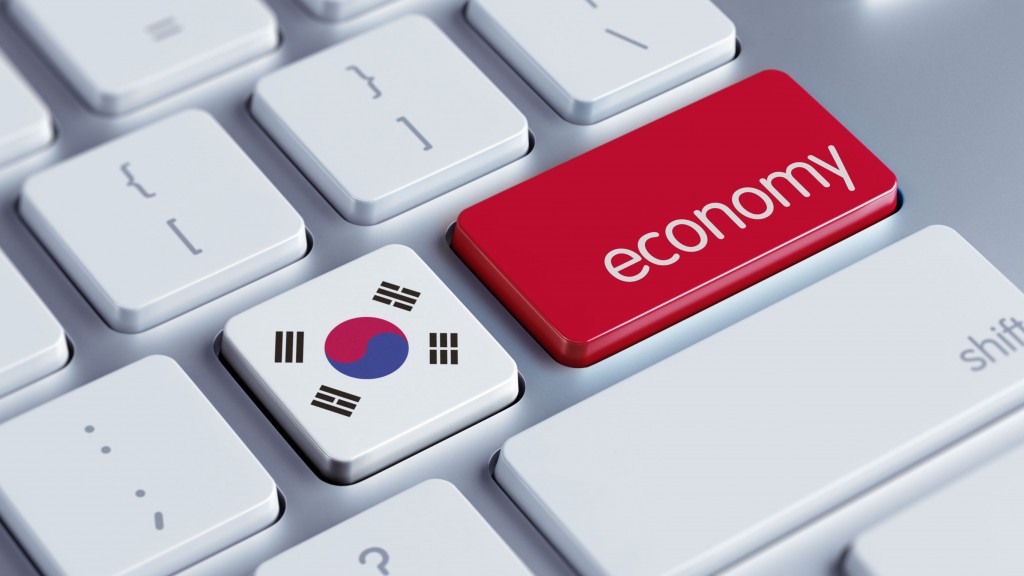
For the first time since 1999, after the 1997 Asian financial crisis, the government has set its economic growth prospects in a 2-percent range (2.6 percent), which experts have called “too optimistic”. (image: KobizMedia/ Korea Bizwire)
SEOUL, Jan. 9 (Korea Bizwire) – Prices are soaring despite a prolonged economic downturn, and the term “stagflation” is now being bandied about to describe the potential future of the South Korean economy.
According to Statistics Korea, the consumer price index last month was up 1.3 percent from the year prior. The index, which remained at 0 percent from May to August 2016, rose to 1.2 percent in September, and to 1.3 percent from October onwards.
Prices of products that are closely related to consumer livelihood were most affected.
As of January 6, the price of radishes jumped by 2.4 times compared to an average year (past five years), as did the prices for cabbage (2.1 times), carrots (2.2 times), and eggs (2 times), reports the Korea Agro-Fisheries & Food Trade Corporation.
Furthermore, prices of instant noodles, soft drinks, and beer rose by 5 to 10 percent over the past six months, while prices of plain noodles, cereal, batteries, ice cream, and snacks rose by 20 to 30 percent during the same period.
Making things worse is the price of oil.
According to the Korea National Oil Corporation, the average price of gasoline across some 11,000 gas stations in Korea was 1,500.44 won ($1.24) per liter on January 5, up from 1,399 won in March of last year.
The exchange rate is another factor that may also influence local prices in the future. The KRW-USD rate, which stands at 1,207.7 won per dollar, is likely to rise, industry watchers expect, if the U.S. maintains its tight-money policy to keep its dollar strong, meaning that Koreans might soon have to pay more Korean won to purchase imported products.
In the meantime, the Korean economy continues to waver, with very few signs of improvement.
For the first time since 1999, after the 1997 Asian financial crisis, the government has set its economic growth prospects in a 2-percent range (2.6 percent), which experts have called “too optimistic”. If the economy does, however, meet that number this year, or anywhere in that range, 2017 will mark the third consecutive year during which Korea will have experienced 2 percent economic growth.
Nonetheless, a majority of experts still remain careful in using the term stagflation to describe the economy, saying that it’s too early to jump into such a dramatic conclusion.
“There are goods like agricultural produce that have seen price increases,” said researcher Kang Jung-gu from the LG Economic Research Institute. “But given the poor demand across the overall economic spectrum, it’s not yet likely for overall prices to see a major hike.”
According to Kang, unless the increasing prices of raw material products lead to a chain reaction of price hikes in finished goods or services, stagflation is not yet a concern. So far, businesses are the ones most suffering from the partial inflation, and are hesitant to raise prices given the poor consumer sentiment sweeping the country, he said.
Another researcher, Lee Sang-jae at Eugene Securities, expressed a similar perspective, saying that “price hikes in certain agricultural produce are a result of the bird flu outbreak and seasonal factors, like sudden demand during the holiday season.”
“It’s difficult to expect price hikes in industrial products or services at the moment due to poor domestic consumption,” he said, adding that the economy will recover somewhat this year from improving export conditions.
Likewise, economics professor Sung Tae-yoon from Yonsei University said “diminishing deflation” may be a better term to describe the current state than “stagflation”, as Korea’s CPI still falls below 2 percent, which is the Bank of Korea’s official inflation target.
However, Sung added that because the increasing prices of necessities can worsen overall consumer sentiment, there’s room for Korea’s economic fundamentals to be downgraded further.
By Lina Jang (linajang@koreabizwire.com)






